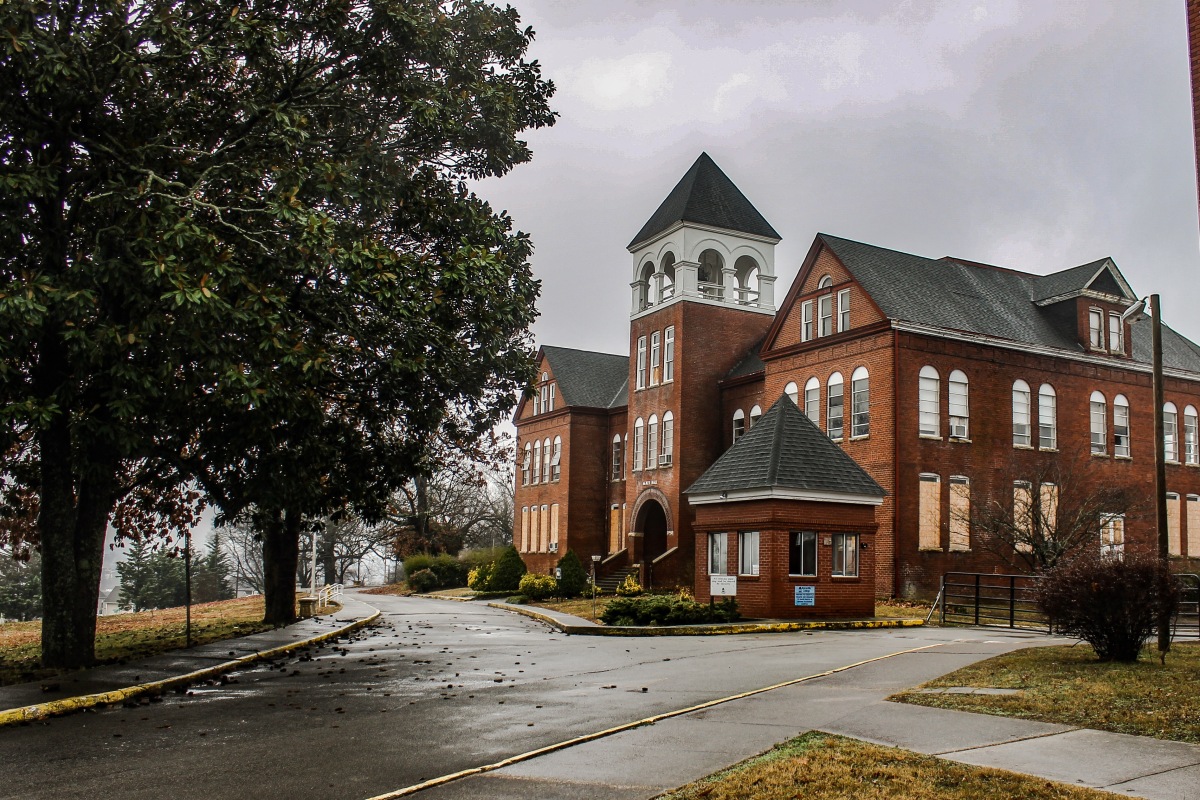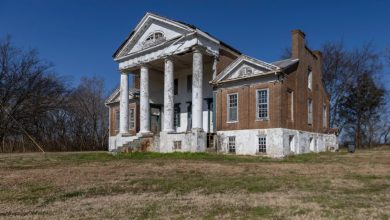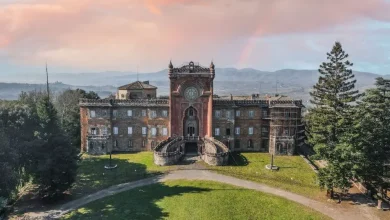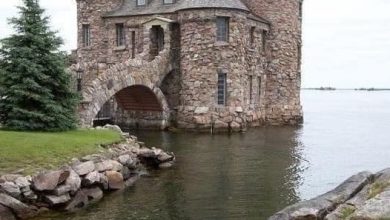Knoxville College – Abandoned Southeast
Knoxville College is a historically black liberal arts institution founded in 1875 by the United Presbyterian Church of North America. The school was part of a missionary effort to educate freed slaves, opening 10 years after slavery was abolished. The school initially offered elementary classes since most freedmen and women were not qualified to go to college. The 39-acre campus includes 17 buildings that are scattered along a hill overlooking a residential neighborhood. The hill was previously the site of a Confederate battery during the Civil War.

Along with classroom and administration buildings, the campus includes a performing arts center, a gymnasium, a library, a student center, and a chapel. The administration building, McKee Hall, was the first building completed in 1876. However, it is not the oldest still standing. A fire destroyed the original building in 1894 and it was rebuilt a year later using student-made bricks. The campus was officially designated as a college in 1877. The students were responsible for constructing most of the buildings on campus. The bricks were made at the campus brickyard. By 1904, students manufactured and either used or sold one million bricks. The chapel was also designed and built by a former student in 1913. The college used lumber donated from land owned by a former student as well. A former Civil War chaplain was selected as the first college president. Knoxville College offered teacher training and full college courses in classics, science, and theology. Classes in agriculture, industrial arts, and medicine were also available.
The elementary department was discontinued after the 1926-27 school year. The high school was discontinued in 1931. In the 1960s, the school had a significant role in the Civil Rights Movement. Notably, Dr. Martin Luther King Jr. was the 1960 commencement speaker. The ceremony was held on the front lawn because there was no place large enough on campus to hold the people who came. Throughout the summer of 1960, students from Knoxville College engaged in a number of sit-ins to protest segregation at downtown lunch counters. They eventually convinced most businesses to end the practice. In 1962, the school’s charter was amended to allow white students.
By the 1970s, the college began to struggle financially along due to a gradual decline in enrollment. In 1997, Knoxville College was dealt a death blow when the school lost accreditation. Suddenly, the financial situation became dire. A sudden drastic decrease in enrollment caused most of the athletic programs to also be canceled. The only student activities left were dance team, choir, debate team, and the trivia team. As the school’s debt skyrocketed, most of the degree programs were discontinued. Faculty members were not being paid. Soon, the campus buildings were shuttered due to unpaid bills.
The college remained open into the 2000s, although enrollment totaled 11 students. In 2005, the board of trustees fired the school’s president. Under new leadership, the alumni hoped to breathe new life into the dying campus. An aggressive fundraising campaign led to an interim president. Unfortunately, the interim president could not turn the failing school around. He left shortly after being hired.

A science center was constructed and equipped in 1957 at a cost of $250,000. After the science center closed, the staff simply locked the doors and forgot about the hazardous chemicals that remained inside.



An evaluation by the state led to the discovery of thousands of hazardous and flammable chemicals. Emergency response members from the EPA investigated the science building in June 2014 and found numerous leaking containers.

High levels of mercury were found throughout the building and in many of the leftover lab specimens.


Officials could never identify the source of the mercury contamination. Campus leaders were worried that people were breaking in and removing items. The buildings had been idle for 5 years before authorities were alerted to the possible hazard.The amount owed to the federal government for the cleanup of the improperly stored chemicals was estimated at $425,000. The college was already struggling to pay back a $4.5 million loan from 2003. In April 2015, the college announced all classes for the Fall 2015 term were suspended in hopes of reorganizing. In May 2016, the Department of Environment and Conservation recommended Knoxville College become a state Superfund site due to the ongoing contamination issues. The city threatened the school with condemnation if they did not make repairs on over a dozen buildings.
Despite having eight buildings on the National Register of Historic Places, Knoxville College has sadly fallen into disrepair. Today, the college is a skeleton of its former glory days. The board of trustees continued to fight for its restoration. Planners from the East Tennessee Development District were invited to start the process of adding more buildings to the NRHP and obtaining a grant that would help with the restoration. While these grants will not be enough to save Knoxville College, the board of trustees is hopeful it will be a step in the right direction. The college started online classes in 2018 and in May 2019 celebrated one graduate of the class of 2019.
Source: https://numerologybox.com
Category: Abandoned Place











